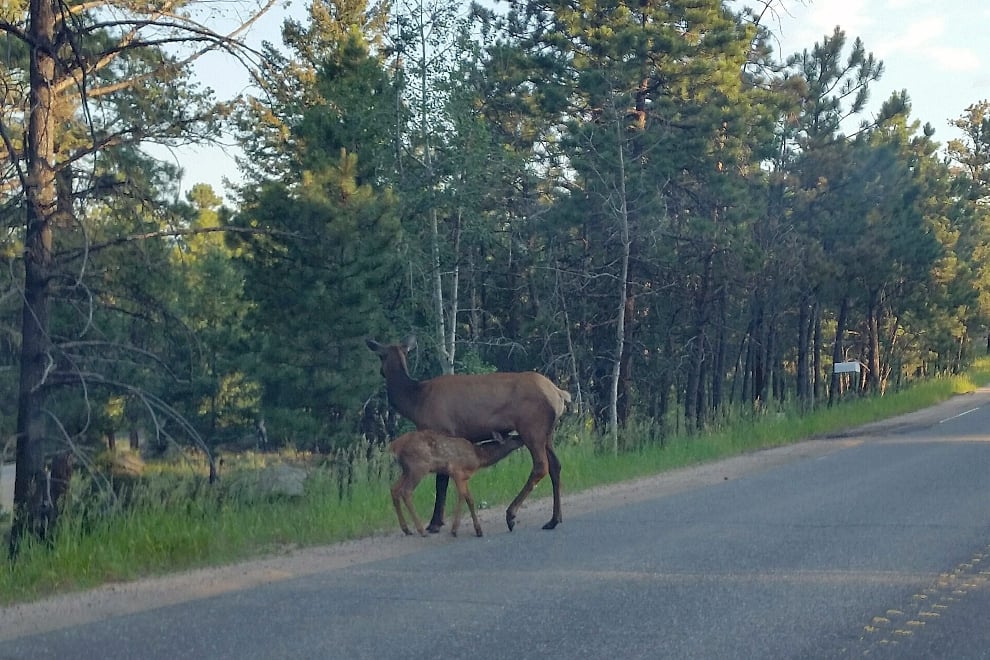Nighttime travel, particularly along remote roads where obstacles and wildlife may be found, can be treacherous. The National Highway Traffic Safety Administration reports that nighttime driving fatalities occur three times more frequently than that of daytime driving.

During low light times, the human eye has a more difficult time with depth perception, color determination, and peripheral vision.
Additionally, as we age, our night vision deteriorates, increasing our risk. Eye strain and fatigue can also lead to dangerous drowsy driving. These tips can help improve overall safety for driving after dark.
1. Adjust your headlights.
Properly aligning your headlights will help keep your beams where they are most useful for night driving and not blinding others approaching you.
Headlight alignment can change over time from loosened light assembly, tire pressure, or where the load weight is being carried. Some headlights have a bubble level in the headlamp assembly to check aim, but often you will have to do it yourself.
Check your owner’s manual for how to correctly adjust the aim of your high and low beams. It may take a few tries, but getting this adjustment dialed in can make a huge difference.
2. Clean your windshield—inside and out.
There is nothing worse than streaks on your windshield, and they can be even more noticeable at night when light bounces off of streaks and grime.
Oil from touching the inside of the glass can linger and smear, which can make for annoying glares. An easy trick to polish glass is to use newspaper that removes residue and doesn’t leave lint behind.
3. Avoid other light sources.
Try to keep non-headlight light sources to a minimum to keep your vision sharp and your concentration focused.
Dim the dashboard instrument panels, use the rear-view mirror dimmer switch, keep map lights and inside reading lights off, and avoid looking at the headlights of oncoming traffic.
It is very easy to stare at bright road signs or other headlights, but this can distract your focus and cause eye strain.
4. Scan for wildlife.
Wildlife is active during the night hours, and can often be found on roads that provide easier travel routes than other forested trails.

Animal collisions can be devastating to the animal and drivers. The cover of dark can protect animals from predators but also conceals them from human eye detection on the roads.
Be extra alert for animals during night hours, watch your speed, and scan ahead for retinal reflections of your headlights in the eyes of animals. Often you will see retinal reflections before you can see the actual animal ahead.
5. Add auxiliary lights.
Fog lights not only help you see the road during foggy weather but because they are mounted low to the ground, they spread wider than the low beams helping you see farther along the shoulder of the road.

HID (high-intensity discharge) lights or LED (light-emitting diode) lightbars can also add to your function of the high beams for those who do a lot of night driving in low-density traffic areas.
These lights should be used cautiously, as they can severely blind other drivers, and because your eyes adjust to the brightness, switching to your normal beams will then seem very dim.
Ideally, these lights should be wired in using a relay to draw power directly from the battery while the control wire comes from a switch, the existing high-beams, or both.
HID lights provide extra illumination at great distances in front of the vehicle, while LED lights provide excellent distributed light for illuminating sides of the road and road surface conditions.
Unlike fog lights, HID or LED lights are not good for use in fog or heavy snow, as too much light is reflected back to the driver.
This information is for educational purposes. VIARV shall not be responsible nor retain liability for RVer’s use of the provided information. Prior to making any RV service decision, you are advised to consult with an RV professional.

